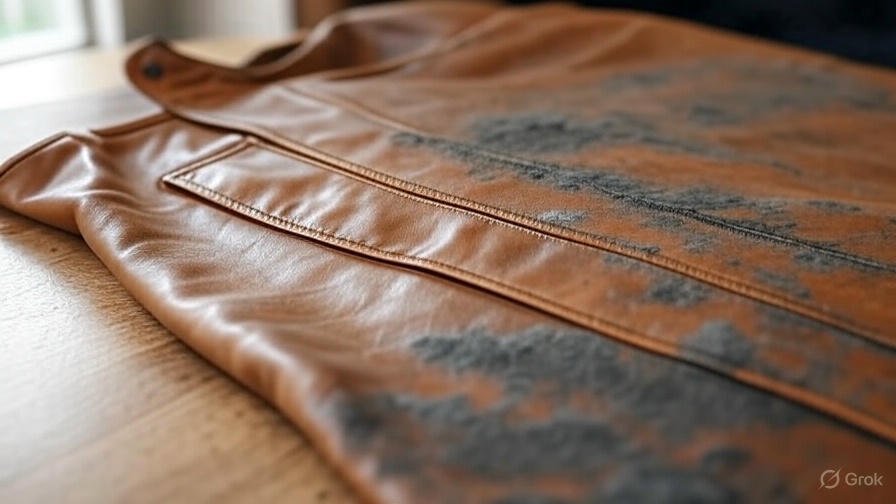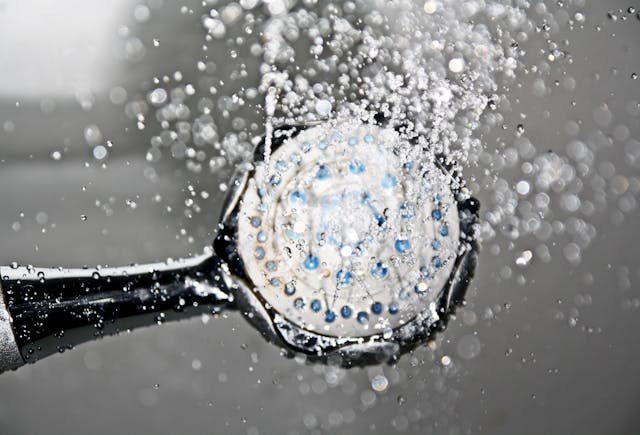Mold growth on leather jackets is a common problem, particularly when stored in damp, humid conditions. The presence of mold not only affects the appearance but can also cause lasting damage to the leather and lead to health issues. If you’re wondering how to remove mold from leather jacket, it’s important to act quickly. Mold on leather jackets often appears as dark spots or a musty odor, which can be challenging to remove without the right tools and techniques. In this guide, we’ll explain the most effective ways to eliminate mold from leather jackets using both DIY methods and when professional cleaning is necessary. With the right care, your jacket can be restored to its original condition and kept safe from future mold growth.

What Causes Mold on Leather Jackets?
Mold thrives in environments with high humidity and moisture. Leather, being a natural material, can absorb moisture, making it susceptible to mold growth. Poor storage conditions, such as storing your leather jacket in a damp closet or leaving it in a humid area, provide the perfect environment for mold to grow. Mold can also develop if the jacket gets exposed to rain or sweat and isn’t cleaned or dried properly afterward.
Specific Risks of Mold on Leather Jackets:
- Leather Damage: Mold can break down the fibers in leather, causing it to crack, stiffen, or lose its flexibility.
- Odor: Mold produces a musty smell that can be difficult to eliminate from leather.
- Health Risks: Mold spores can lead to allergic reactions, respiratory issues, and other health problems.
What Are the Signs of Mold on Leather Jackets?
Mold on leather jackets can be identified through several signs:
- Visual Signs: Small black, green, or white spots on the leather surface. Mold might appear as fuzzy or slimy patches.
- Smell: A musty or earthy odor is one of the strongest indicators of mold presence.
- Texture Changes: Mold can cause the leather to become rough or stiff in affected areas.
Tools and Materials Needed to Remove Mold from Leather Jackets:
Before you start cleaning your leather jacket, ensure you have the following tools and materials:
- White Vinegar or Rubbing Alcohol: Both are effective mold-killing agents.
- Baking Soda: Helps neutralize odors and remove surface mold.
- Soft Cloth or Sponge: Use to apply cleaning solutions without damaging the leather.
- Brush (Optional): A soft-bristled brush can be used to gently scrub the mold off the leather.
- Leather Conditioner: After cleaning, use a leather conditioner to restore moisture and prevent drying out.
- Safety Gear: Gloves and a mask to protect against inhaling mold spores.

Step-by-Step Guide to Remove Mold from Leather Jackets:
Follow these steps to safely remove mold from your leather jacket:
- Safety First: Wear gloves and a mask to protect yourself from mold spores. Make sure you work in a well-ventilated area.
- Assess the Damage: Check the extent of the mold on your leather jacket. If the mold is superficial, cleaning with a solution will suffice. If the jacket has significant mold infestation, professional cleaning may be required.
- Clean the Surface:
- Vinegar or Alcohol Solution: Mix equal parts of white vinegar or rubbing alcohol and water. Dampen a soft cloth with the solution and gently wipe the affected areas.
- Baking Soda Paste: For stubborn spots, make a paste by mixing baking soda and water, then apply it to the moldy areas. Let it sit for 10-15 minutes before wiping off with a clean cloth.
- Brush Off the Mold: Use a soft brush to gently scrub off any surface mold before applying the cleaning solution.
- Dry the Jacket: After cleaning, let the leather jacket air dry in a well-ventilated area, away from direct sunlight or heat sources, which can damage the leather.
- Condition the Leather: Once the jacket is dry, apply a leather conditioner to restore moisture and flexibility to the leather.
Professional Mold Removal Options:
If the mold infestation is extensive or you are concerned about damaging the leather, it might be best to consult a professional leather cleaner. A professional can use specialized cleaning products and techniques to ensure that the leather is cleaned thoroughly without causing harm to the material. Professionals also have access to tools like UV lights and ozone treatments that can eliminate mold and mildew more effectively than home methods.
How to Prevent Mold on Leather Jackets:
Preventing mold on leather jackets is essential to keep them in good condition. Here are some tips to help you avoid mold in the future:
- Store in a Dry Place: Always store your leather jacket in a cool, dry place with proper ventilation. Avoid damp areas like basements or closets with poor airflow.
- Use a Dehumidifier: In areas with high humidity, using a dehumidifier can help keep the air dry and reduce the risk of mold.
- Avoid Direct Contact with Moisture: Avoid getting your leather jacket wet. If it gets exposed to rain, let it dry naturally at room temperature.
- Use Mold Prevention Products: You can also purchase mold inhibitors specifically designed for leather.
When to Replace Leather Jackets Instead of Cleaning:
If your leather jacket is heavily infested with mold and cleaning methods don’t restore its condition, it might be time to replace it. Mold can cause irreversible damage to leather, weakening the material and affecting its structure. If the mold has deeply penetrated the leather or caused extensive damage, it may be safer and more cost-effective to replace the jacket.
Conclusion:
Now that you know how to remove mold from leather jacket, you can tackle mold growth quickly and safely. Whether you choose DIY methods with household ingredients or seek professional help, addressing mold issues promptly is crucial to avoid further damage and health risks. By following the steps in this guide, you can restore your leather jacket and prevent future mold growth. If you need professional assistance, don’t hesitate to contact a leather care expert for a thorough cleaning.
FAQs About Mold Removal from Leather Jackets:
- Is it safe to remove mold from leather jackets myself?
Yes, using the right tools and cleaning solutions, it is safe to remove mold from leather jackets at home. - Can mold on leather jackets be permanently removed?
With proper cleaning and conditioning, mold can be removed. However, if the mold is severe, professional help might be needed. - How do I prevent mold from growing on my leather jacket?
Store your jacket in a dry, well-ventilated area and keep it away from moisture to prevent mold growth. - What’s the best way to clean a moldy leather jacket?
Use a vinegar or rubbing alcohol solution and a soft cloth to clean the mold, followed by air drying and conditioning the leather. - Can I use bleach to clean mold off my leather jacket?
No, bleach can damage leather. It’s best to use vinegar or rubbing alcohol as safer alternatives.

Anamika is a passionate writer for Eco365Store.com, specializing in topics that inspire a cleaner, greener world. With expertise in home cleaning, recycling, and eco-friendly solutions, she crafts engaging and informative articles that help readers adopt sustainable practices in their daily lives.

